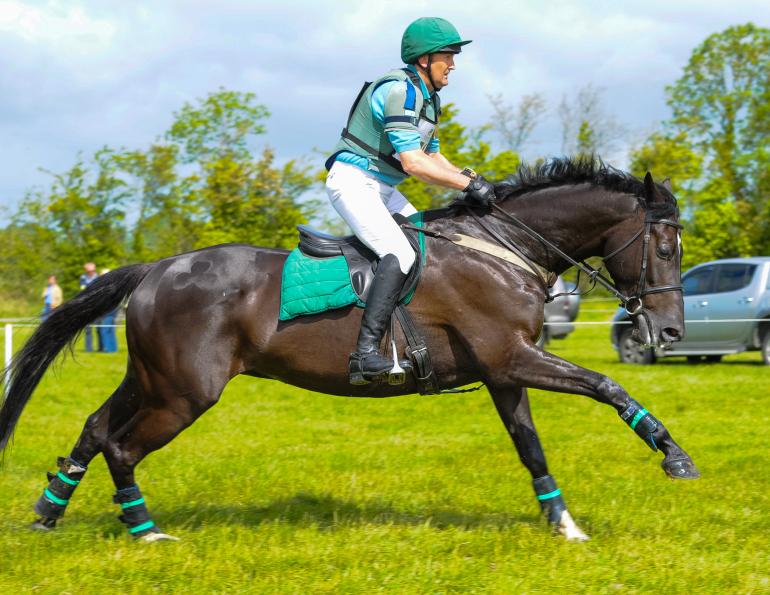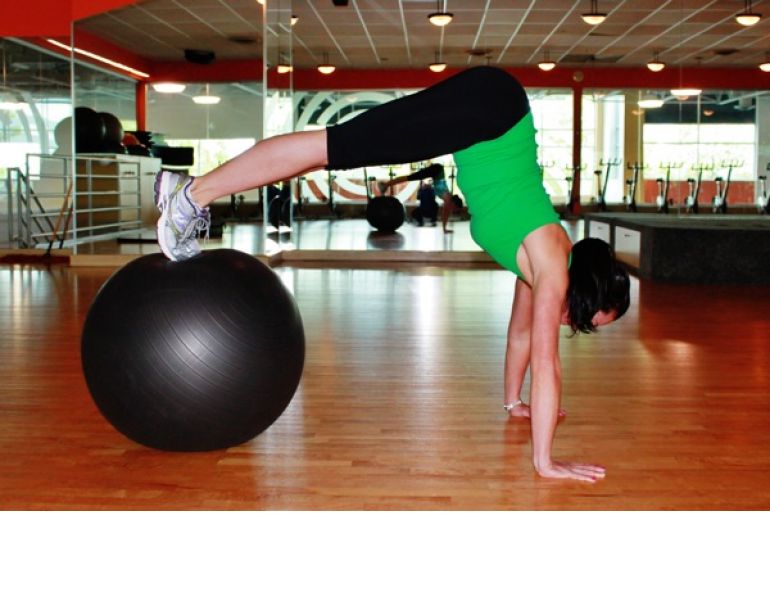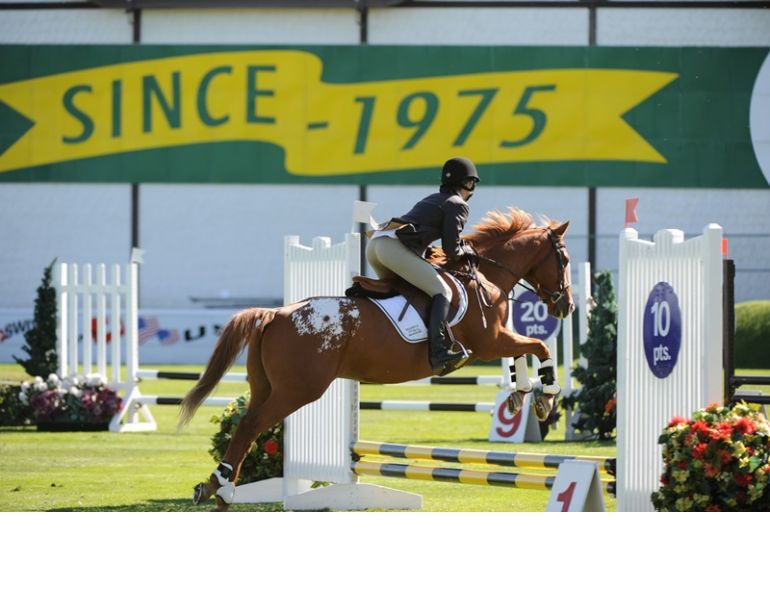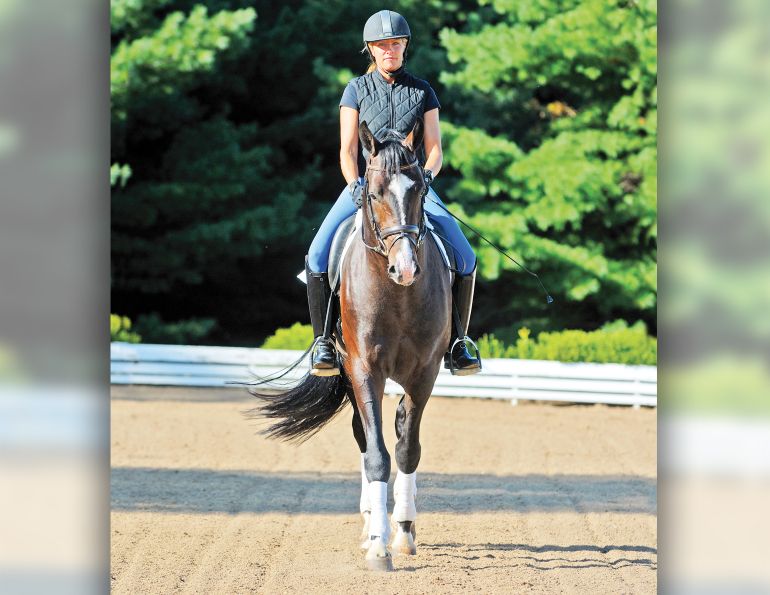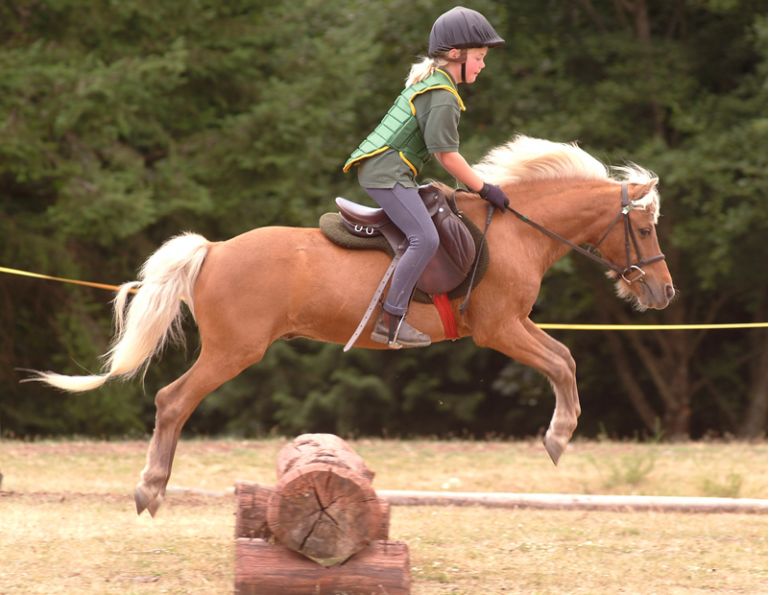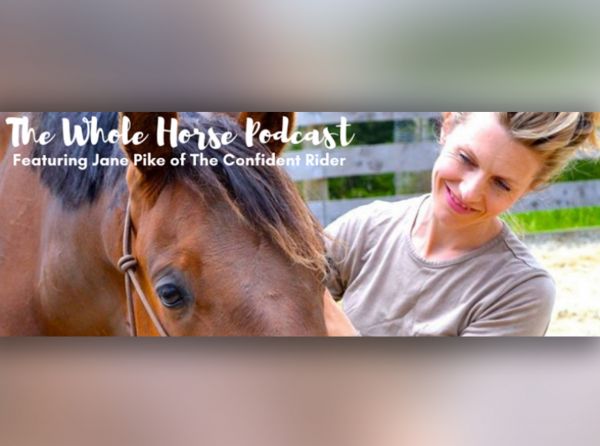In the March/April 2009 issue of Canadian Horse Journal, I read a great article on designing your training schedule by April Clay. She discussed the importance of identifying your goals, breaking them down into specific skills required and the exercises needed to develop them, planning for both you and your horse, building appropriate rest periods and progressions into the plan, and keeping track so you know where you are at on a day to day basis.
You can also apply these principles to your own physical training. As we know, top riders often work with personal trainers or engage in cross-training activities to build stamina, endurance, muscle memory, and flexibility.
They know that riding places specific demands on certain muscle groups. If you only ride occasionally, you’re probably more aware of this fact. If you ride many times a week, you might be on the other end of the spectrum where lack of ground training is resulting in your riding creating repetitive strain issues.
Either way, you want to have endurance and the ability to ride your best and to ride safely every time and all day on a show day.
When I do volunteer work stretching riders at shows, they come with strains and pains they normally don’t experience simply because a daily ride is one thing, but being in the saddle in correct form several times in the same day is quite another.
Lack of fitness does not only result in soreness and muscle strain at a time when you need to be at your peak, but it can contribute to lower scores or even accidents when your body doesn’t respond precisely when you need it to, or starts to collapse with fatigue throwing off your horse’s balance.
The primary goal of a rider fitness program is to build stamina and strength appropriate to the discipline. All riders should have a strong core, good balance, good general flexibility, and a fairly high level of proprioception (awareness of where your body parts are in relation to your body and movement).
The Plan
The Equine Canada Long Term Equestrian Development guidelines indicate that a competitive adult rider should be engaging in cross-training activity three to four times per week for 60 to 90 minutes. The goals of training should include core strength, muscle strength balancing and symmetry, flexibility, and cardiovascular endurance. A non-competitive adult should be engaged in physical activity on a daily basis for 30 to 60 minutes. Additionally, your program should take your specific requirements as an individual into account.
If you have a tendency to land to the left over fences, for example, you may want to incorporate more balancing and strength exercises to help you gain more symmetry and control over your body weight distribution in your stirrups so you are not repeatedly throwing your weight on one side of your horse. We pay so much attention to saddle fit, but can throw everything out and even cause soundness issues in the horse if our own weight distribution is not symmetrical. The effect your own lack of symmetry and self-carriage has on the horse is magnified in power events such as high level jumping, and high stamina events such as distance riding or eventing.
Related: Three Pre-Ride Stretches for Equestrians

Riders should cross-training with cardio two to three times per week, depending on their discipline, to increase stamina. Off-horse fitness training helps build stamina, endurance, muscle memory, and flexibility, which will help you ride your best every time and especially on a full show day. Photo: Shutterstock/Gorodenkoff
A similar issue in dressage might be a tendency to sit with one hip lower than the other or off to one side, causing your horse to drift in that direction and interfering with his straightness on circles and lateral movements. Another might be having tight muscle groups impeding your ability to have the deep seat you need for your level.
Cross-training can seem like a lot of work and the question is: how on earth will you fit it in? The best way to ensure you reach your goals in spite of obstacles is to plan. Your rider fitness plan can be designed in chunks as small as five to fifteen minutes for most of the components. The idea is to develop a realistic plan that will give you that added edge — maybe even the edge your competitors don’t have.
First, assess your key priorities. Are you sitting with more weight in one stirrup than the other? Are you tending to pitch onto your horse’s forehand when you get tired? Are you stiff and do you find yourself getting a sore back? Are you out of breath more than you should be? Is your coach constantly telling you to get your shoulders back but you can’t seem to keep them there? Questions like these will help you identify your specific riding performance goals.
For example, your goal might be “jump a whole course with my shoulders back, no lower back pain, and not getting out of breath.” You have just identified back and shoulder strength training and cardiovascular improvement as key priorities. Since riders who have trouble keeping their shoulders back also typically have tight chest muscles, stretching your chest and shoulders before and after each ride is going to be important. Lower back pain from riding is often related to weak back muscles combined with tight hamstrings, so stretching your hamstrings every day would be part of your plan too.
There is just not space here to go through all the potential individual issues which you could address in your plan. However, I can help you here with some general, discipline-based guidelines.
In your plan, you should specify which days you intend to schedule time for each activity or where you will fit them into your schedule. You do not necessarily need to go to a gym, especially if the time it takes to drive there and back is excessive. You will also need to plan what weight sizes you will use, how many repetitions and sets of strength exercises you will do, and what your weekly stretching focus will be. You can split muscle groups to make your workout fit in smaller chunks. You can do core work just about every day. Since you can’t spend an hour a day stretching, you can focus on one muscle group a week where you will spend longer in your stretching to make significant gains in flexibility while maintaining the rest of your body with quicker stretches.
For example, if your coach is telling you to get your heels down all the time, you might want to start with a focus on calf stretches every day until your calf and ankle are a little more supple and getting your heels down is easier for you.
Don’t forget that you need a day off too, and that muscles need time to rebuild after strength training. You need at least 48 hours in between strength training and intense cardio workouts. You should also not train intensely on the day before a show, or during an intense string of show days. Stretching and walking to keep loose, keep your joints supple, and maintain your flexibility while lowering your stress levels would be more appropriate.
Tracking Progress
You will see your own progress as you continue to track changes in your strength program and your cardio intensity intervals. For example, you might start out speed walking for three minutes and then need a two minute recovery period before picking up speed again. Within a month of diligent training, you could expect to be speed walking or even running for five to six minutes, with only one minute of recovery. Other measurements might include the distance from the end of your fingers to the floor in a toe touch, or your waist and hip measurements.
Generally, you should begin to see improvement at the following rates:
- Flexibility improvements within a week of daily stretching;
- Cardiovascular improvements within two to three weeks of cardio activity at least twice a week;
- Strength gains within two weeks of training at least twice a week.
If you stop training for a period of time, it will take you about the same amount of time to get back to your pre-stopping level of fitness. In other words, two weeks off takes about two weeks to recover. The time to ramp up the fastest in your training is early in the season for about a month, then lower the amount of time and intensity of your training to a maintenance level, with more focus on stretching.
Finally, don’t forget to keep a chart and track your accomplishment of each component each day. You can write in specific activities you did, use code letters in your regular agenda or on a calendar, or print off a grid with weekdays in the vertical column, and exercise components across the top, then use a simple tick mark tally system. You should also start your program by taking some body measurements, noting how long you can do intense cardio before taking a break, and recording what your weights and repetitions are for strength training.
Related: Develop a Stronger Riding Position
13 Training Tips
Here are some rules of thumb that will help guide you in your fitness training:
1. If you don’t want to waste time, your cardio intensity level should be enough that you are breathing out of your mouth. You can’t skip this part if you want oxygen to your brain and muscle stamina at the precise moment you need it.
2. Select strength training that encourages multi-joint movement over bulk. Free weights, elastic stretch bands, bodyweight exercises, or cable-based machines you can use creatively are better for a rider than machines which support your body for you while targeting only one or two muscles.
3. If you’re doing strength training, don’t waste your time. High repetitions with low weights are only good if you work the muscles to exhaustion. You won’t get bulky doing this, but will get incredible stamina. Also, if you aren’t doing strength training a minimum of twice a week, you won’t progress.
4. Work muscles you use for riding in a fuller range of motion than you do riding so they do not shorten and tighten.
5. Work your glutes and outer thighs to support your hips so you can sit deep and avoid lower back strain.
6. Work your shoulders — especially women.
7. Two minutes of core exercises every day is better than 15 minutes or more once or twice a week. A great goal is a total of 100 to 200 cumulative repetitions of a variety of core exercises daily.
8. Remember your core includes your sides and back too. Most riders do not work the back enough.
9. Be mindful of posture at all times, no matter what you’re doing. Engage your core through every exercise, and every task and moment of your day if you want to develop beautiful posture that maintains itself without effort.
10. It’s important not to do a lot of activity which uses your body unevenly, such as racquet sports.
11. Teach yourself to breathe into your abdomen, and use that deep breathing when you exercise. It will carry over to your riding, provide your body with more oxygen in performance, and also relax both you and your horse.
12. If you can get a friend to accompany you for at least some of your newly committed time, you will get the benefits of accountability, eyes on the ground, and needed social time without paying a personal trainer.
13. Give your body a day off. You do it for your horses. All athletes build rest into their schedule because overtraining and overwork breaks you down.
Related: Support Your Back When Riding Horses
To read more by Heather Sansom on this site, click here.
Main Photo: When developing your fitness plan, identify your specific riding performance goals and your individual requirements.Dreamstime/UnicornAmira



